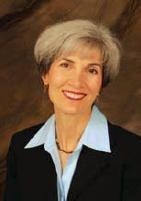
You have all heard the saying that love is wasted on the young yet most Hollywood movies, television programs, and commercials are geared to young people in love in romantic settings. Apparently the depiction of young people in love has more appeal than older people in their 50s and 60s expressing loving signs of affections, except in ads for Viagra or Cialis. Unfortunately, most of the movies now made about people of our generation and older show them in crises or breaking up and starting all over again. The reality is that we all need to feel love and be loved by someone. The love that has grown over time is much more precious and seasoned than any younger generation could imagine. Why? It takes time for love to mature.
Love/Life Challenges
Love is much more than a feeling. Our seasoned generation of boomers has had a lot more experience with this emotion because it has been tested over time. Some of us have passed this test and others, for various reasons, have had to start over with someone else. Hopefully, it’s been better the second time around.
Being honest with ourselves, we know that holding on to love through all of life’s trials and tribulations can be challenging. As the first wave of boomers entered their mid-20s during the 1960s and 70s, they were finishing college or some kind of training. Many were dating future spouses and heading down the aisle with the love of their lives. Most of these couples had children while they progressed in their careers. Some women, who had professional careers, took a break to be at home with their children before going back to work once the children were older. Some of us faced the challenges of cooperating over parenting styles, sick children and spouses, aging parents, career challenges, and disappointments in our kid’s choices. Some of you had to parent grandchildren that came earlier than expected or support an unemployed spouse. I could go on and on but you get the picture. There were many good things happening like a child’s first steps/words, progressing through graduations from high school and college, promotions, new friends, and moving to an exciting place.
Where Have All the Kids Gone?
Most of us born in the first 10 to 15 years of the postwar baby boom have already sent their last child off to college. We are affectionately referred to as empty-nesters. For many couples, this empty nest creates the opportunity to refocus the majority of their time on each other just like they did when they were first married.
During a business retreat, I asked one of the attendees about his family. He said his children were now in college. I teased him by saying that he and his wife were “empty nesters.” He added, “Yes, my wife and I are getting reacquainted.” Well put, I thought. I sensed that this time for him was filled with anticipation yet some trepidation. What will happen when you no longer have your children as the focus of your relationship?
I remember when my husband and I became “empty-nesters.” I was a step parent to two children who had come to live with us in their early teens. Because I had no children, I looked forward to the opportunity to help my husband parent them. We centered a lot of attention and activity on them. Even for us, when the last one left for college there was an empty space that we had to fill. What did we want to do on weekends now that the kids were gone? What had changed in each other’s personal growth that we hadn’t taken the time to notice and acknowledge? What was the vision for our future as a couple while the kids created their own future without us being directly involved? These are important questions but even more important is this: what is the status of the relationship and the love that you started out with?
Finding Your Love Language
Some couples find it difficult to stay connected and nurture relationships during child-rearing and career-building years. One day they look at each other and wondered to themselves-who is this person? It’s hard to raise children, work full time, and have a life at the same time. The National Center for Family and Marriage Research at Bowling Green State University found that at least 1 in 4 marriages of those 50 years old and older are ending in divorce. This is an unsettling statistic when we realize that some of these marriages are not first marriages. In fact, more than 60% of second marriages end in divorce.
How can you avoid being a statistic and be successful at getting reacquainted? Just because you may have been preoccupied with all of the family responsibilities over the last 30 years doesn’t mean that there isn’t love and a whole new dimension to discover within each other and the relationship.
Gary Chapman wrote a book entitled The Five Love Languages. He takes love beyond the feeling. In addition to saying “I love you,” he shares five ways that people express love that can sometimes go unnoticed. People express their love by:
– Speaking words of affirmation
– Spending quality time together
– Giving and receiving gifts
– Doing acts of service
– Expressing affection through physical touch
As you begin to have conversations about your future together, reflect on the languages of love that you have been expressing all along without realizing it. Ask each other what expressions of love are the most important and then show that expression of love to your spouse or partner. Reconnecting requires healthy communication and practicing new behaviors.
Falling in love is one thing, but holding on to the deeper love that grows over the years is much harder. Speak the love language that your spouse wants and needs to hear. This will help you hold on to the marriage you have built together so you can make the best of your life for the rest of your married life together!
Keep your marriage strong and your relationship healthy through your retirement years with help from Dee Cascio. Dee specializes in Retirement Lifestyle Strategies for those planning to retire in 3-5 years. She is a Certified Life & Retirement/Recareer Coach, an Associate Certified Coach (ACC) and a member of the International Coach Federation. Dee is also a Licensed Professional Counselor (LPC), a Licensed Marriage and Family Therapist (LMFT), a National Certified Counselor, a Certified Couples Imago Relationship Therapist, and a member of the American Association of Marriage and Family Therapy (AAMFT).


